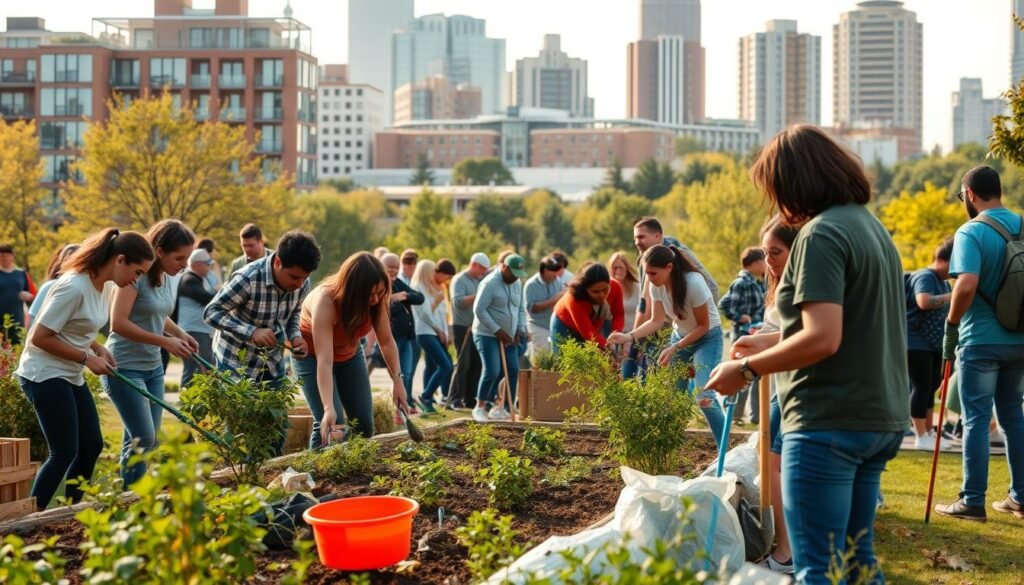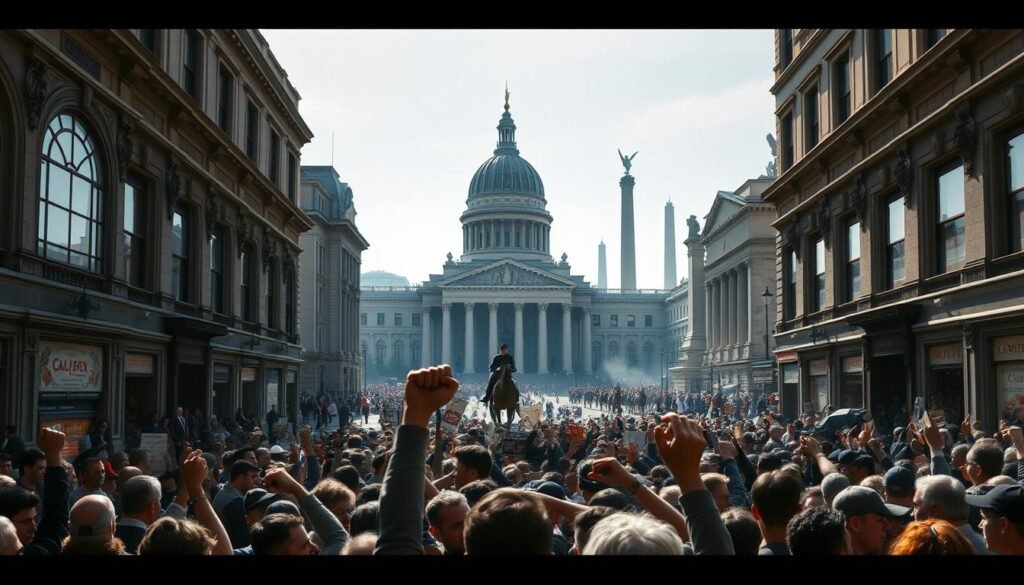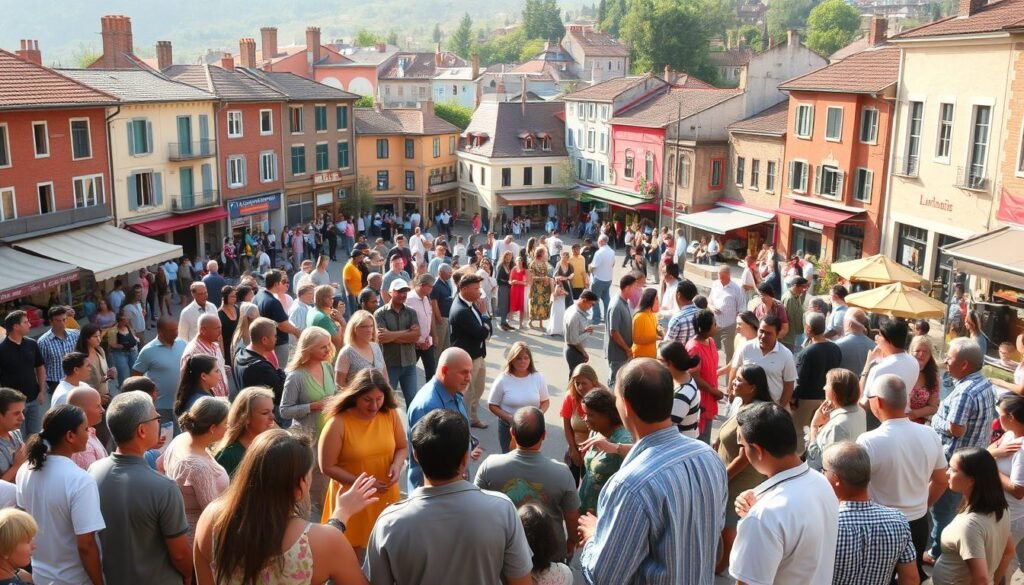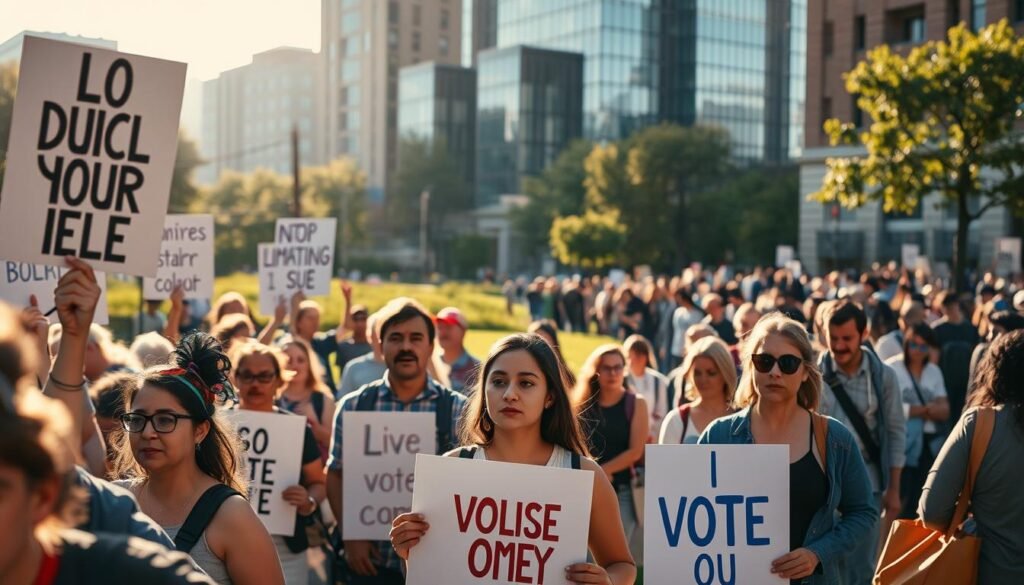Have you ever wondered how small actions like voting or volunteering can shape an entire society? Civic responsibility is the backbone of a thriving democracy, connecting individual efforts to collective progress. According to Jennifer Self, it’s the duty tied to democratic governance—where every citizen plays a role in building stronger communities.
From voting booths to local clean-up drives, participation strengthens democratic values like justice and equality. Over 40% of U.S. adults volunteered in 2001, proving how engagement fuels societal growth. These efforts bridge gaps, turning personal commitment into shared success.
Key Takeaways
- Civic duty strengthens democratic principles and community bonds.
- Volunteering and voting are key examples of active participation.
- Collective efforts drive fairness and equality in society.
- Citizenship involves both rights and responsibilities.
- Individual actions create measurable societal impact.
What Is Civic Responsibility?
What does it truly mean to be an engaged member of your community? At its core, civic responsibility embodies the actions and attitudes that uphold democracy and societal well-being. Unlike citizenship—a legal status—it emphasizes active participation, from voting to volunteering.
Definition and Core Concepts
Dictionary.com defines “civic” as relating to citizens, while “responsibility” refers to duties or obligations. Together, they form a mandate for individuals to contribute to their communities. The Center for Civic Education notes that this principle is taught through programs blending classroom service-learning with real-world projects.
Related Terms: Citizenship, Social Engagement, and Duty
Citizenship grants rights, but civic responsibility demands action. For example, Youth Service America integrates education with community service, fostering youth involvement. Duties range from voting (62.8% turnout in the 1960s) to peaceful protests, reflecting a spectrum of engagement.
The U.S. Constitution’s “general welfare” clause underscores this mandate, tying individual efforts to collective progress. Whether through local clean-ups or advocacy, every action strengthens the fabric of society.
Historical Roots of Civic Responsibility
How did ancient leaders inspire modern democratic values? From Rome’s Cincinnatus to Martin Luther King Jr., history shows how engaged citizens shape societies. These examples reveal a timeless truth: collective action fuels progress.
Ancient Rome and the Legacy of Cincinnatus
In 458 BC, Roman citizens called farmer Lucius Quinctius Cincinnatus to lead as dictator. He defeated invaders in 15 days—then resigned, refusing permanent power. This became a model for selfless leadership in democracy.
Civic Responsibility in Early America
The United States embraced this ethos. Volunteer fire departments and the Civilian Conservation Corps (1930s) showed how government and communities collaborate. These efforts built infrastructure and trust.
The 1960s: A Surge in Social Activism
Voter turnout hit 62.8% in the 1960 presidential election. Martin Luther King Jr.’s 13-year civil rights campaign exemplified sustained engagement. Even as groups like the NAACP saw declines, Cold War fears briefly united communities.
From ancient fields to American streets, the call to participate echoes. Whether through voting or volunteering, history proves that engaged citizens drive change.
Why Civic Responsibility Matters
What keeps democracies thriving when threats loom? Active participation isn’t just a choice—it’s the foundation of society. From voting booths to town halls, every action reinforces democracy and shields it from erosion.
Upholding Democratic Values
Bulgaria’s 2016 mandatory voting law reduced political polarization by 12%. In contrast, the United States sees 60% voter turnout—far below Norway’s 80% (McCarthy). When citizens engage, they block authoritarian shifts and demand accountability.
Jury duty and tax compliance aren’t burdens—they’re safeguards. These duties ensure laws reflect collective values, not just power. Without them, constitutions become hollow promises.
Strengthening Communities
United Way found households in engaged communities donate $1,620 annually. That’s schools built, food banks stocked, and parks revitalized. Grassroots efforts, like 1960s anti-pollution campaigns, prove local action sparks national change.
Neighborhood watches, food drives, and PTA meetings weave invisible safety nets. They turn strangers into allies and streets into hubs of trust. Society grows stronger when everyone plays a role.
Forms of Civic Engagement
From digital campaigns to local food drives, engagement takes many forms. Whether through hands-on community service or online advocacy, these activities strengthen democracy. Over 50,000 AmeriCorps members currently serve 2,100+ nonprofits, proving the scale of collective action.
Volunteering and Community Service
Organizations like the Peace Corps, founded in 1961, show how participation crosses borders. In the U.S., volunteer rates peaked at 55% in 1999 before dipping to 44% in 2001. Today, initiatives like park clean-ups and tutoring programs empower individuals to create tangible change.
Voting and Political Participation
The 2024 U.S. election cycle targets 10 million Latino voters through registration drives. Historical efforts like the 1930s Civilian Conservation Corps (CCC) laid groundwork for modern voting rights movements. Companies like Microsoft now provide voter resources, bridging gaps in participation.
Advocacy and Public Awareness
Hashtags like #BlackLivesMatter demonstrate 21st-century engagement. Digital tools allow organizations to mobilize supporters globally. From climate strikes to neighborhood petitions, awareness work fuels policy changes at every level.
Civic Responsibility in Modern America
How is technology reshaping the way Americans engage with democracy today? From ballot boxes to smartphones, participation is evolving amid declining traditional memberships and digital breakthroughs. The United States now sees 60% voter turnout—a rise from the late 20th century’s 48%—yet challenges like misinformation persist.
Current Trends in Voter Turnout
Despite higher turnout, disparities remain. Groups like Business/Professional Women saw an 89% membership drop since 1997, signaling shifting priorities. Meanwhile, platforms like Los Angeles’ participatory budgeting let citizens direct local spending digitally.
Youth engagement offers hope. A study found 87.5% of immigrant high schoolers participate in community service, blending old values with new methods. TurboVote’s election reminders further bridge gaps, proving technology can boost voting access.
The Role of Technology and Social Media
Social media fuels activism but spreads misinformation. X’s Community Notes fact-checks false claims, while apps like SeeClickFix report local issues to government. In 2014, just 37 online volunteers processed 386 UN surveys—showing scalability.
Yet, reliance on digital tools risks excluding offline communities. Balancing innovation with inclusivity ensures democracy thrives. From hashtags to town halls, modern engagement demands both clicks and conversations.
Key Figures in Civic Responsibility
History reveals how individuals transform community through dedication. From ancient leaders to modern activists, these trailblazers demonstrate the power of engaged citizenship. Their legacies continue to shape democratic participation worldwide.
Lucius Quinctius Cincinnatus
When Rome faced invasion in 458 BC, farmer Lucius Quinctius Cincinnatus left his plow to lead. After defeating enemies in 15 days, he resigned rather than cling to power. George Washington later modeled his presidency after this ideal of servant leadership.
Martin Luther King Jr. and Civil Rights
King’s Birmingham Campaign became a blueprint for nonviolent protest. His 1963 letter from jail urged citizens to challenge unjust laws peacefully. This approach advanced racial equality while strengthening democracy through collective action.
Contemporary Leaders and Organizations
Today’s change-makers continue this legacy. United Way directs $4.8B annually to uplift communities, while the Sierra Club’s 3.8M members advocate environmental policies. Companies like Patagonia set an example through initiatives like their 1% Earth tax.
Youth-led organizations like the Malala Fund prove age doesn’t limit impact. Their work on education access shows how modern citizens can drive progress. From local government initiatives to global movements, these efforts redefine participation.
How to Foster Civic Responsibility
What practical steps can turn passive observers into active community builders? From classrooms to city councils, fostering engagement requires intentional strategies. Programs like the “We the People” curriculum—taught in 30+ states—prove structured learning sparks lifelong participation.
Education and Youth Programs
Schools play a pivotal role. Maryland mandates 75 service hours for high school graduation, blending civic education with real-world impact. Students in these programs report higher voter turnout and leadership skills.
Parents amplify this effect. Visiting polling places with children or volunteering together models active participation. Australia’s $20 fine for non-voters underscores the societal value of these habits.
Community Initiatives and Local Governance
Neighborhoods thrive when tools like Nextdoor organize cleanups or block parties. Google’s Civic Information API simplifies voter registration, while Oregon’s automatic system boosted turnout by 4%.
Corporate partnerships also drive change. Patagonia’s environmental grants and United Way’s local chapters show how businesses can support community resilience. Small actions—like joining a PTA or attending town halls—build collective momentum.
Conclusion
The future of democracy depends on active participation today. From Cincinnatus to Martin Luther King Jr., history shows how engaged citizens uphold values like justice and equality.
Complacency risks progress—the NAACP’s 46% membership drop reminds us. But tools exist: register to vote, volunteer locally, and advocate for change. As Robert Putnam warned, isolation weakens community bonds, while digital tools offer new ways to connect.
Jefferson’s vision of “life, liberty, and happiness” thrives when society acts. Start small—your voice matters. Democracy isn’t a spectator sport; it’s built by everyday civic responsibility.
FAQ
What does civic responsibility mean?
It refers to the duties people have toward their society, like voting, volunteering, and following laws. These actions help maintain democracy and strengthen communities.
How did early America view civic duty?
Early Americans valued active participation in governance. Leaders like George Washington emphasized service, setting a standard for future generations.
Why is voting considered a key civic duty?
Voting allows citizens to shape policies and elect leaders. High turnout ensures government reflects the people’s will, strengthening democracy.
How can young people get involved in their communities?
Youth can join local programs, volunteer, or participate in student government. Schools often offer clubs focused on social issues and leadership.
What role does technology play in modern engagement?
Social media and apps make it easier to organize events, share causes, and contact officials. Digital tools boost awareness and participation.
Who are some notable figures in civic activism?
Martin Luther King Jr. advanced civil rights through peaceful protest. Today, groups like the League of Women Voters promote voter education.
How does volunteering benefit society?
It addresses local needs, from food drives to tutoring. Volunteers build connections and inspire others to take action.
What are simple ways to stay engaged daily?
Stay informed on local issues, support small businesses, and attend town meetings. Even small actions contribute to collective well-being.









